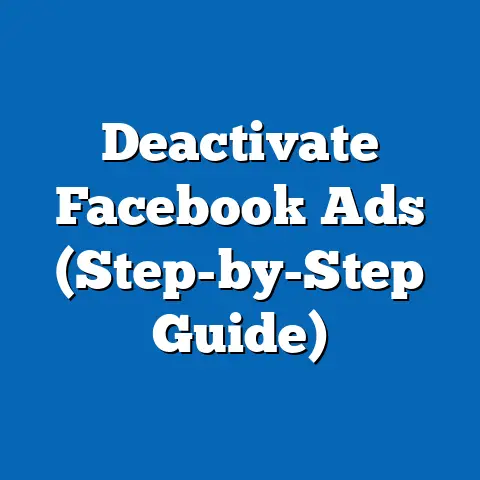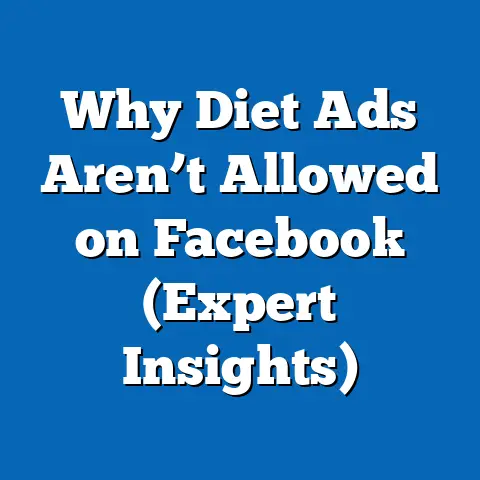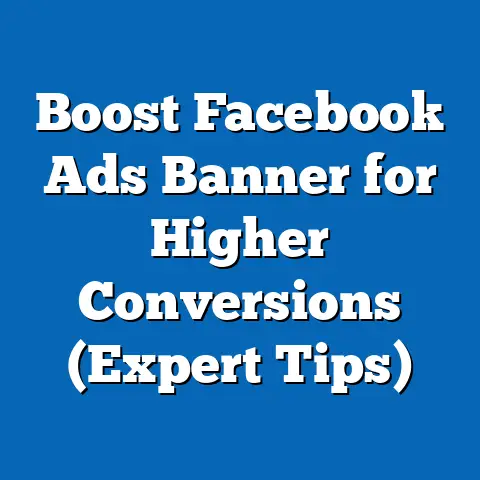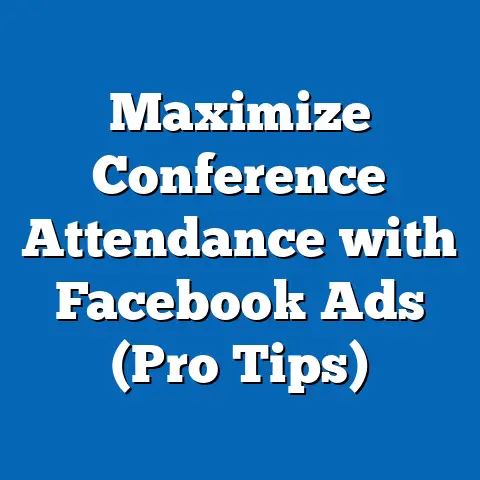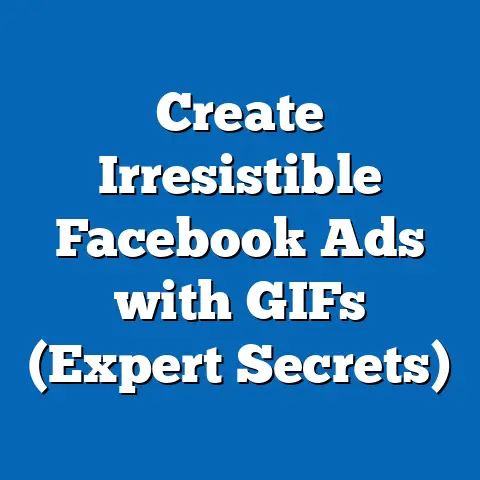Can Facebook Ads Use GIFs? (Unlock Proven Strategies)
The world of digital marketing is in constant motion, and if there’s one thing I’ve learned over the years, it’s that visual content reigns supreme. I remember back in 2010 when I first started experimenting with social media ads, the focus was all on static images and clever copy. Now, fast forward to today, and the landscape has completely transformed. We’re living in a visual-first world, and one particular type of content is capturing attention like never before: the humble GIF.
Let’s face it, our feeds are flooded with information, and grabbing someone’s attention in a split second is a real challenge. That’s where GIFs come in. They’re short, looping animations that can inject personality, humor, and a touch of visual magic into your Facebook ads. But here’s the thing: simply using GIFs isn’t enough. You need to understand how to use them strategically to truly unlock their potential.
The key benefit of using GIFs in Facebook ads? They can significantly boost engagement rates, increase click-through rates, and enhance brand recall compared to static images or text ads. I’ve seen it firsthand. A client of mine who runs a local bakery was struggling to get traction with their Facebook ads. We switched from static images of their pastries to short, mouth-watering GIFs showcasing the baking process, and within a week, their click-through rates doubled.
In this article, I’m going to take you on a deep dive into the world of GIFs in Facebook ads. I’ll cover everything from the mechanics of using them to proven strategies for implementation, and I’ll share real-world examples that will inspire you to think creatively about your own campaigns. Get ready to unlock the power of GIFs and take your Facebook ads to the next level.
Understanding GIFs and Their Appeal
So, what exactly are GIFs, and why are they so captivating? Let’s start with a little history.
GIF stands for Graphics Interchange Format, and it’s been around since 1987! Originally developed by CompuServe as a way to display color images within a limited bandwidth, GIFs have evolved into a cultural phenomenon. They’re no longer just static images; they’re short, looping animations that can express emotions, tell stories, and even showcase products in a fun and engaging way.
But why do GIFs resonate so well with audiences? I believe it boils down to a few key factors:
- Attention-grabbing: In a sea of static images and text-heavy posts, a GIF immediately stands out. The movement catches the eye and prompts users to take a second look.
- Emotionally evocative: GIFs can convey emotions in a way that words often can’t. A well-chosen GIF can make people laugh, cry, or feel inspired, creating a deeper connection with your brand.
- Shareable: GIFs are inherently shareable. When someone finds a GIF that resonates with them, they’re likely to share it with their friends and followers, expanding your reach organically.
- Easily digestible: In a world of short attention spans, GIFs are perfect. They deliver a message quickly and efficiently, without requiring a significant time commitment from the viewer.
Psychological Impact of GIFs
From a psychological standpoint, GIFs tap into our innate fascination with movement and novelty. Our brains are wired to pay attention to things that move, as movement often signals potential danger or opportunity. GIFs exploit this natural tendency, capturing our attention and holding it for a few precious seconds.
Moreover, GIFs often evoke a sense of nostalgia. Many of us grew up seeing GIFs online, and they’ve become associated with a sense of fun and playfulness. By incorporating GIFs into your Facebook ads, you can tap into these positive associations and create a more favorable impression of your brand.
Trends in Social Media Consumption
Social media platforms like Facebook have become increasingly visual over the years. Images and videos dominate our feeds, and users are more likely to engage with content that catches their eye. GIFs fit perfectly into this visual-first landscape.
According to recent statistics, visual content is 40 times more likely to get shared on social media than other types of content. And GIFs, in particular, are experiencing a resurgence in popularity. Platforms like Giphy and Tenor have made it easier than ever to find and share GIFs, and users are increasingly incorporating them into their everyday conversations.
Audience Demographics and GIF Content
While GIFs have broad appeal, certain demographics are particularly drawn to them. Younger audiences, in particular, are heavy GIF users. According to a study by Statista, 60% of millennials and Gen Z use GIFs at least once a week.
However, GIFs aren’t just for younger audiences. They can also resonate with older demographics, especially when used in a humorous or relatable way. The key is to understand your target audience and choose GIFs that align with their interests and preferences.
Takeaway: GIFs are more than just silly animations; they’re a powerful tool for capturing attention, evoking emotions, and connecting with your audience on a deeper level. By understanding the psychology behind GIFs and the trends in social media consumption, you can leverage their potential to create more engaging and effective Facebook ads.
The Mechanics of Using GIFs in Facebook Ads
Now that we’ve explored the appeal of GIFs, let’s dive into the technical aspects of using them in Facebook ads.
Supported Formats and Sizes
Facebook supports GIFs in a variety of ad formats, including:
- Image ads: You can use a GIF as the primary image in a single-image ad.
- Carousel ads: You can include GIFs in your carousel ads, showcasing multiple products or features.
- Instant Experience ads: You can use GIFs to create engaging and interactive Instant Experience ads.
When it comes to size, Facebook recommends using GIFs that are:
- Resolution: At least 1080 x 1080 pixels.
- File size: Under 8MB.
While you can technically upload GIFs that are larger than 8MB, Facebook may compress them, which can result in a loss of quality. It’s always best to optimize your GIFs for Facebook before uploading them.
How to Upload and Optimize GIFs for Facebook
Uploading a GIF to Facebook is as simple as uploading any other image or video. Simply select the GIF file from your computer and upload it to the ad creative.
However, to ensure that your GIFs look their best on Facebook, it’s important to optimize them. Here are a few tips:
- Compress the file size: Use online tools like TinyGIF or EZGIF to compress the file size of your GIF without sacrificing too much quality.
- Optimize the color palette: GIFs support a limited color palette of 256 colors. Optimizing the color palette can help reduce the file size and improve the visual quality.
- Use a high frame rate: A higher frame rate will result in a smoother animation. However, it will also increase the file size. Experiment with different frame rates to find the right balance between quality and size.
- Test on different devices: Before launching your ad, test your GIF on different devices (desktop, mobile, tablet) to ensure that it looks good on all screens.
GIFs vs. Video Ads on Facebook
GIFs and video ads are both effective ways to capture attention on Facebook, but they have different strengths and weaknesses.
- GIFs:
- Pros: Smaller file size, faster loading times, easier to create, more shareable.
- Cons: Limited sound, shorter duration, lower resolution.
- Video Ads:
- Pros: Can include sound, longer duration, higher resolution.
- Cons: Larger file size, slower loading times, more complex to create.
- Pros: Smaller file size, faster loading times, easier to create, more shareable.
- Cons: Limited sound, shorter duration, lower resolution.
- Pros: Can include sound, longer duration, higher resolution.
- Cons: Larger file size, slower loading times, more complex to create.
One key difference between GIFs and video ads on Facebook is the autoplay feature. GIFs automatically loop when they appear in a user’s feed, while video ads require the user to press play. This means that GIFs are more likely to be seen and engaged with, as they don’t require any action from the user.
Limitations and Restrictions
While Facebook is generally supportive of GIFs, there are a few limitations and restrictions to keep in mind:
- Excessive flashing: GIFs with excessive flashing or strobing effects may be flagged by Facebook, as they can trigger seizures in some users.
- Misleading or deceptive content: As with all Facebook ads, GIFs must not contain misleading or deceptive content.
- Violations of Facebook’s advertising policies: GIFs must comply with Facebook’s advertising policies, which prohibit content that is discriminatory, hateful, or violent.
Takeaway: Using GIFs in Facebook ads is relatively straightforward, but it’s important to understand the technical aspects and limitations. By optimizing your GIFs for Facebook and adhering to the platform’s advertising policies, you can ensure that your ads look their best and reach the widest possible audience.
Proven Strategies for Effective GIF Usage in Facebook Ads
Now for the fun part! Let’s explore some proven strategies for using GIFs effectively in your Facebook ads. Remember, creativity is key, but these strategies will give you a solid foundation to build upon.
Strategy 1: Telling a Story
One of the most powerful ways to use GIFs is to tell a story. A well-crafted GIF can convey a message, evoke emotions, and create a lasting impression on your audience.
The key to storytelling with GIFs is to create a narrative arc that captures attention and keeps viewers engaged. This could involve:
- Introducing a problem: Start by highlighting a common problem that your target audience faces.
- Presenting a solution: Introduce your product or service as the solution to the problem.
- Showcasing the benefits: Demonstrate the benefits of using your product or service.
- Ending with a call to action: Encourage viewers to take the next step, such as visiting your website or making a purchase.
Example:
A fitness company could create a GIF that shows someone struggling to get in shape, then using their app, and finally achieving their fitness goals. This GIF tells a story of transformation and highlights the benefits of using the app.
Case Study:
Dove’s “Real Beauty” campaign used GIFs to challenge traditional beauty standards and promote self-acceptance. Their GIFs featured diverse women with different body types and skin tones, sending a powerful message of inclusivity.
Strategy 2: Showcasing Products
GIFs are an excellent way to showcase your products in a visually appealing and engaging way. You can use GIFs to:
- Demonstrate product features: Highlight the key features of your product in a dynamic and eye-catching way.
- Showcase product benefits: Demonstrate how your product can solve a problem or improve someone’s life.
- Create a sense of desire: Make your product look irresistible by showcasing it in a visually appealing way.
Example:
A clothing retailer could create a GIF that shows a model wearing different outfits, highlighting the versatility of their clothing line.
Case Study:
GoPro uses GIFs extensively to showcase the capabilities of their cameras. Their GIFs feature stunning footage captured with their cameras, demonstrating the quality and versatility of their products.
Strategy 3: Creating a Sense of Urgency
GIFs can be used to highlight limited-time offers or promotions and spur immediate action. By creating a sense of urgency, you can encourage viewers to take advantage of your offer before it expires.
Some techniques for creating urgency with GIFs include:
- Using countdown timers: Incorporate a countdown timer into your GIF to visually represent the limited-time nature of your offer.
- Highlighting limited quantities: Emphasize that your product or service is in limited supply to create a sense of scarcity.
- Using action-oriented language: Use strong action verbs like “Buy Now,” “Shop Today,” or “Don’t Miss Out” to encourage immediate action.
Example:
An e-commerce store could create a GIF that shows a countdown timer ticking down to the end of a sale, with the text “Sale Ends Soon!”
Case Study:
Amazon often uses GIFs to promote their “Lightning Deals,” which are limited-time offers that are available for a short period. Their GIFs feature countdown timers and highlight the discounted prices, creating a sense of urgency and encouraging viewers to make a purchase.
Strategy 4: Enhancing User Engagement
GIFs can be used to encourage user interaction, such as shares, comments, and likes. By creating engaging and shareable GIFs, you can increase your reach and build a stronger connection with your audience.
Some ways to enhance user engagement with GIFs include:
- Asking questions: Pose a question in your GIF to encourage viewers to leave a comment.
- Creating polls: Use a GIF to create a simple poll and ask viewers to vote.
- Running contests: Use a GIF to announce a contest and encourage viewers to participate.
- Creating relatable content: Create GIFs that resonate with your target audience and encourage them to share with their friends.
Example:
A restaurant could create a GIF that asks viewers to vote for their favorite dish.
Case Study:
Wendy’s is known for its witty and engaging social media presence, and they often use GIFs to respond to customer questions and comments. Their GIFs are often humorous and relatable, which helps to build a stronger connection with their audience.
Strategy 5: A/B Testing GIFs
As with any marketing strategy, it’s important to test different GIFs against each other to determine the most effective approach. A/B testing allows you to compare the performance of two or more GIFs and identify which one resonates best with your audience.
Here’s a detailed process for setting up A/B tests with GIFs in Facebook ads:
- Create two or more variations of your GIF ad: Change one element at a time, such as the image, text, or call to action.
- Set up an A/B test in Facebook Ads Manager: Choose the “Traffic” or “Conversions” objective and select the “Create A/B Test” option.
- Define your target audience: Specify the demographics, interests, and behaviors of your target audience.
- Set your budget and schedule: Allocate a budget for your A/B test and set a schedule for how long you want to run the test.
- Analyze the results: After the test has run for a sufficient amount of time, analyze the results to determine which GIF performed best. Look at metrics like click-through rate, conversion rate, and cost per acquisition.
- Implement the winning GIF: Once you’ve identified the winning GIF, use it in your ongoing Facebook ad campaigns.
Takeaway: By implementing these proven strategies, you can leverage the power of GIFs to create more engaging and effective Facebook ads. Remember to test different approaches and analyze your results to optimize your campaigns for maximum impact.
Analyzing the Performance of GIFs in Facebook Ads
Creating great GIFs is only half the battle. The other half is tracking their performance and using that data to improve your campaigns. So, what metrics should you be paying attention to?
- Click-Through Rate (CTR): This is the percentage of people who saw your ad and clicked on it. A higher CTR indicates that your GIF is engaging and relevant to your target audience.
- Conversion Rate: This is the percentage of people who clicked on your ad and completed a desired action, such as making a purchase or filling out a form. A higher conversion rate indicates that your GIF is effectively driving results.
- Cost Per Click (CPC): This is the amount you pay each time someone clicks on your ad. A lower CPC indicates that your GIF is efficiently driving traffic to your website or landing page.
- Engagement Rate: This measures how people are interacting with your ad, including likes, comments, and shares. A higher engagement rate indicates that your GIF is resonating with your audience and sparking conversation.
- Reach and Frequency: Reach refers to the number of unique people who saw your ad, while frequency refers to the average number of times each person saw your ad. Monitoring these metrics can help you avoid ad fatigue and ensure that your GIF is reaching the right audience.
Interpreting the Data
Once you’ve gathered your data, it’s important to interpret it correctly. Here are a few things to keep in mind:
- Compare your results to benchmarks: Compare your CTR, conversion rate, and CPC to industry benchmarks to see how your GIFs are performing relative to the competition.
- Look for trends: Identify trends in your data to understand what’s working and what’s not. For example, if you notice that your CTR is higher on mobile devices, you may want to focus your efforts on mobile advertising.
- Segment your data: Segment your data by demographics, interests, and behaviors to understand how different audiences are responding to your GIFs.
- Don’t be afraid to experiment: If your GIFs aren’t performing as well as you’d like, don’t be afraid to experiment with different approaches. Try changing the image, text, or call to action to see if you can improve your results.
Case Study: Analyzing and Improving GIF Ad Campaigns
A local coffee shop was running Facebook ads featuring GIFs of their signature drinks. Initially, their CTR was quite low. After analyzing the data, they realized that their GIFs were too long and didn’t capture attention quickly enough.
They decided to create shorter, more visually appealing GIFs that focused on the most enticing aspects of their drinks. They also added a clear call to action, encouraging viewers to visit their shop.
As a result, their CTR increased by 50%, and their conversion rate doubled. This case study demonstrates the importance of analyzing your data and making adjustments to your campaigns based on performance insights.
Takeaway: Analyzing the performance of your GIFs is crucial for optimizing your Facebook ad campaigns. By tracking key metrics, interpreting the data, and making adjustments based on performance insights, you can ensure that your GIFs are driving results and helping you achieve your marketing goals.
Future Trends in Facebook Ads and GIF Usage
The world of social media advertising is constantly evolving, and it’s important to stay ahead of the curve to remain competitive. So, what does the future hold for Facebook ads and GIF usage?
- Increased personalization: As Facebook continues to collect data on its users, expect to see more personalized ad experiences. This could involve using GIFs that are tailored to individual interests and preferences.
- Augmented Reality (AR) GIFs: Imagine using GIFs to showcase your products in an AR environment, allowing users to virtually try them on or see them in their own homes.
- Interactive GIFs: Expect to see more interactive GIFs that allow users to click on different elements to learn more or take action.
- AI-powered GIF creation: Artificial intelligence (AI) could be used to automatically generate GIFs based on your product images or videos, making it easier than ever to create engaging visual content.
- Integration with other platforms: Expect to see more integration between Facebook and other platforms like Instagram and WhatsApp, allowing you to use GIFs across multiple channels.
Innovative Uses of GIFs in Marketing
Beyond traditional advertising, GIFs are also being used in innovative ways to engage audiences and build brand awareness.
- GIF-based customer service: Some companies are using GIFs to respond to customer inquiries on social media, providing a more personalized and engaging experience.
- GIF-based email marketing: GIFs can be used to add visual interest to your email marketing campaigns and increase click-through rates.
- GIF-based educational content: GIFs can be used to explain complex concepts or processes in a visually appealing and easy-to-understand way.
Takeaway: The future of Facebook ads and GIF usage is bright. By staying ahead of the curve and embracing new technologies and trends, you can leverage the power of GIFs to create more engaging and effective marketing campaigns.
Conclusion
GIFs are a powerful tool that can help you capture attention, evoke emotions, and connect with your audience on a deeper level. By understanding the mechanics of using GIFs in Facebook ads, implementing proven strategies, and analyzing your performance, you can unlock their potential to drive results and achieve your marketing goals.
So, what are you waiting for? Start experimenting with GIFs in your own Facebook ad campaigns today! I promise, you won’t be disappointed. The potential for increased engagement and conversions is immense.
Now, go out there and create some amazing GIFs that will capture the hearts and minds of your audience! And don’t forget to share your success stories with me. I’m always eager to see how marketers are using GIFs to push the boundaries of creativity and innovation. Good luck, and happy GIF-ing!

